Gyroporus Quél.
Three species are so far known in Europe. Fruitbody boletoid. Cap dry. Stipe hollow or cavernose, brittle. Pores and tubes whitish to cream or straw. Flesh whitish, unchanging or blueing slightly.
Gyroporus cyanescens (Bull. : Fr.) Quél.
Description
Cap up to 10 cm, at first hemispherical then expanding to convex, almost white, ivory, straw, velvety to fibrillose, usually unchanging when touched or bruised. Stipe cylindrical or clavate, hollow, fragile, fibrillose, almost concolorous with the cap. Flesh whitish, blueing when exposed to air. Tubes at first whitish, then cream to straw, blueing when exposed to air. Pores whitish, then cream to straw, blueing when bruised. Smell not distinctive. Taste not distinctive. Spores 9–11 × 5–6 μm.
Habitat. Broadleaf or coniferous forests, mycorrhizal with various deciduous and coniferous trees.
Distribution. Widespread in Europe.
Photographs

Fruitbodies of Gyroporus cyanescens. The cap often has more or less fibrillose appearance. (photo I. Assyova)
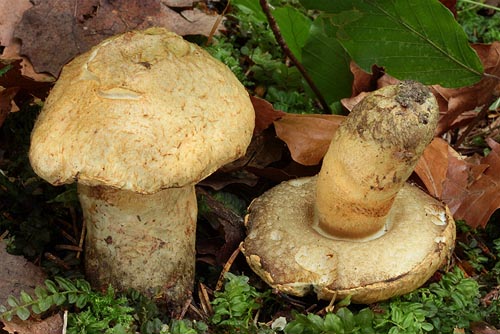
Fruitbodies of Gyroporus cyanescens. (photo M. Mikšík)
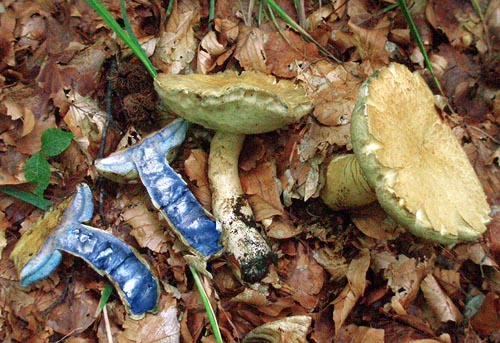
Fruitbodies of Gyroporus cyanescens. The blueing may vary a lot in this species - from violent to almost none as seen on this photograph and the those below. Also note the cavities in the stipe. (photo G. Konstantinidis)
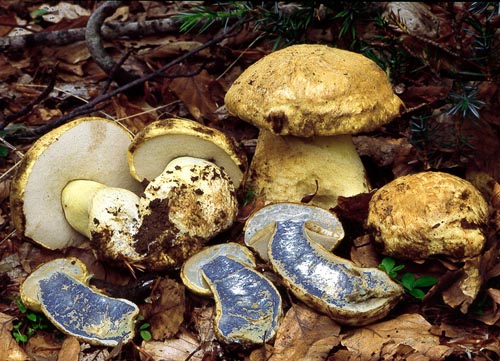
Fruitbodies of Gyroporus cyanescens. (photo Y. Sitylidis)
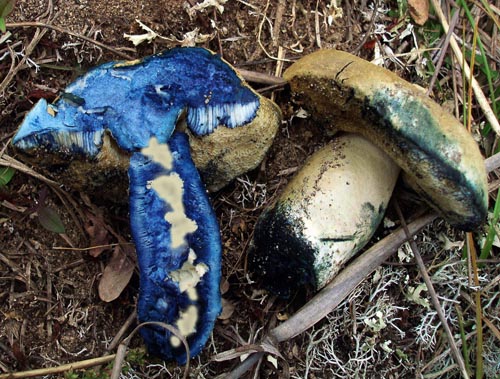
Fruitbodies of Gyroporus cyanescens. (photo G. Konstantinidis)
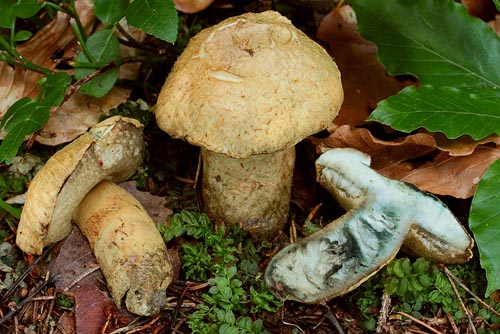
Fruitbodies of Gyroporus cyanescens. (photo M. Mikšík)
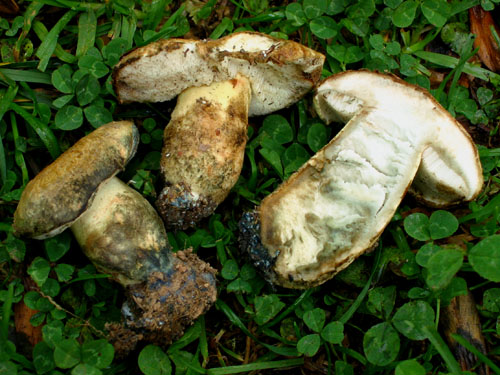
Fruitbodies of Gyroporus cyanescens. This collection shows only faint blueing. (photo B. Assyov)
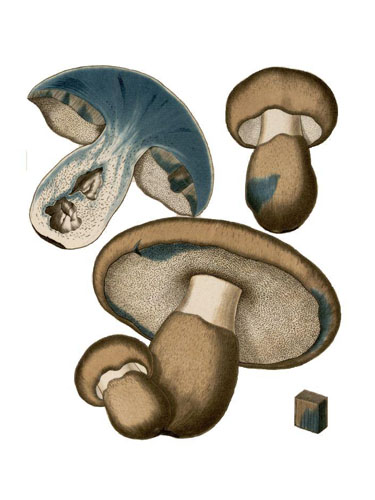
Bulliard's illustration supplementing the original description of Boletus cyanescens (= Gyroporus cyanescens)
Important literature
Alessio, C.L. 1985. Boletus Dill. ex L. (sensu lato). – In: Fungi Europaei. Vol. 2. Pp. 1–705. Libreria editrice Biella Giovanna, Saronno.
Estadès, A. & Lannoy, G. 2004. Les bolets européens. – Bulletin Mycologique et Botanique Dauphiné-Savoie 44(3): 3–79.
Galli, R. 1998. I Boleti. Atlante pratico-monographico per la determinazione dei boleti. Edinatura, Milano.
Knudsen, H. & Vesterholt, J. [eds.]. 2008. Funga Nordica. Nordsvamp, Kopenhagen.
Lannoy, G. & Estadès, A. 2001. Les Bolets. Flore mycologique d’Europe. Documents Mycologiques Mémoire Hors série no. 6. Pp. 1–163. Association d’Écologie et de Mycologie, Lille.
Muñoz, J.A. 2005. Boletus s. l. – In: Fungi Europaei. Vol. 1. Pp. 1–951. Edizioni Candusso, Alassio.
Pilát, A. & Dermek, A. 1974. Hríbovité huby. Československé hríbovité a sliziakovité huby (Boletaceae – Gomphidiaceae). Veda, Bratislava.
Šutara, J., Mikšík, M. & Janda, V. 2009. Hřibovité houby. Čeled’ Boletaceae a rody Gyrodon, Gyroporus, Boletinus a Suillus. Academia, Praha.
Watling, R. 1970. Boletaceae, Gomphidiaceae, Paxillaceae. – In: Henderson, D.M., Orton, P.D. & Watling, R. [eds]. British fungus flora. Agarics and Boleti. Vol. 1. Royal Botanic Garden, Edinburgh.
Watling, R. & Hills, A.E. 2005. Boletes and their allies (revised and enlarged edition). – In: Henderson, D.M., Orton, P.D. & Watling, R. [eds]. British Fungus Flora. Agarics and boleti. Vol. 1. Royal Botanic Garden, Edinburgh.